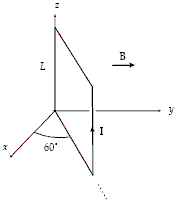Discuss the characteristics of the Universe as observed from Earth
What will be an ideal response?
The Universe looks about the same whichever way you look. That is called isotropy. Of course, there are local differences. If you look toward a galaxy cluster, you see more galaxies, but that is only a local variation. On the average, you see similar numbers of galaxies in every direction. Furthermore, the background radiation is also almost perfectly uniform across the sky.The Universe is observed to be highly isotropic, almost exactly the same in all directions when viewed from our position.The Universe also seems to be homogenous; homogeneity is the property of being the same everywhere. Of course there are local variations. Some regions contain more galaxies and some less. Also, if the Universe evolves, then at large look-back times you see galaxies at an earlier stage. If you account for these well-understood variations, then the Universe seems to be, on average, the same everywhere. This is harder to check because you can't actually go to the locations of distant galaxies and check in detail that things are about the same there as here, but all astronomical observations indicate this is so.Isotropy and homogeneity together lead to the cosmological principle, that any observer in any galaxy sees that the Universe has the same general properties, after accounting for relatively minor local and evolutionary variations. The cosmological principle implies that there are no special places in the Universe. What you see from the Milky Way Galaxy is typical of what all intelligent creatures see from their respective home galaxies. Furthermore, the cosmological principle is another way of saying that the Universe has no center or edge. Such locations would be special places, and the cosmological principle means there are no special places.
You might also like to view...
A person has a mass of 45 kg. How much does she weigh on the Moon, where g = 1.62 m/s2?
A) 45 N B) 73 N C) 7.4 N D) 220 N E) 440 N
An extremely light rod 1.00 m long has a 2.00-kg mass attached to one end and a 3.00-kg mass attached to the other
The system rotates at a constant angular speed about a fixed axis perpendicular to the rod that passes through the rod 30.0 cm from the end with the 3.00-kg mass attached. The kinetic energy of the system is measured to be 100.0 J. (a) What is the moment of inertia of this system about the fixed axis? (b) What is the angular speed (in revolutions per second) of this system? What will be an ideal response?
A square loop (L = 0.20 m) consists of 50 closely wrapped turns, each carrying a current of 0.50 A. The loop is oriented as shown in a uniform magnetic field of 0.40 T directed in the positive y direction. What is the magnitude of the torque on the loop?
A. 0.21 N ? m B. 0.20 N ? m C. 0.35 N ? m D. 0.12 N ? m E. 1.73 N ? m
The critical angle for a substance in air is measured at 53.7°. If light enters this substance from air at 45.0° with the normal, at what angle with the normal will it continue to travel?
A) 34.7° B) 53.7° C) 45.0° D) It will not continue, but will be totally reflected.